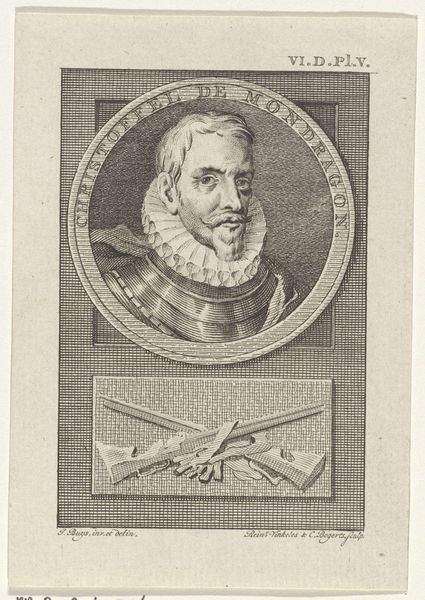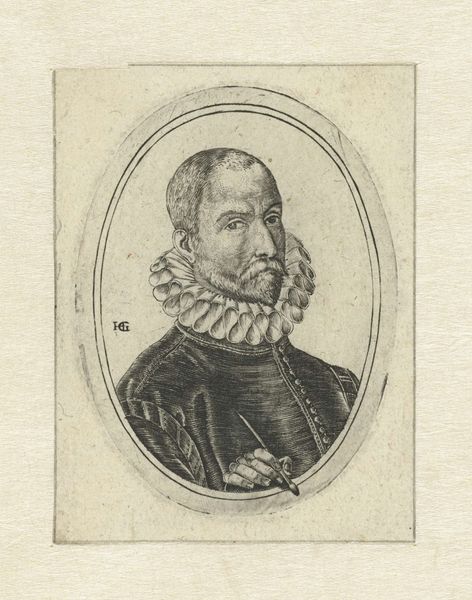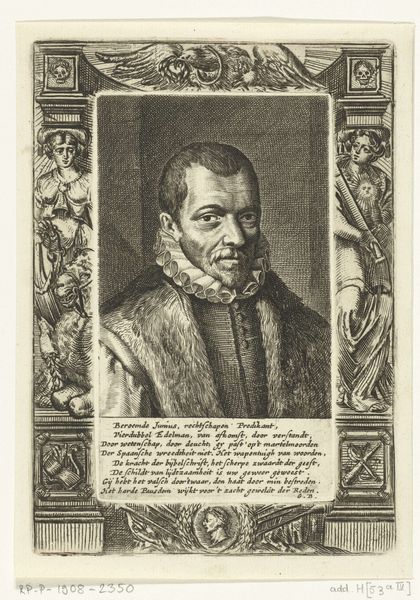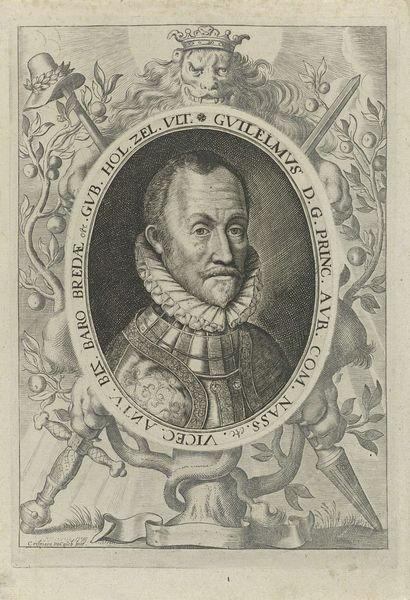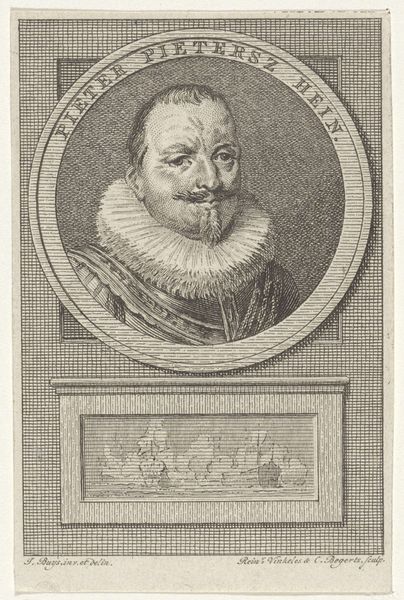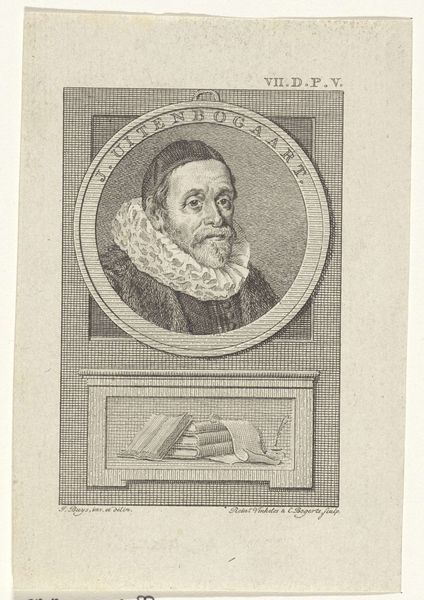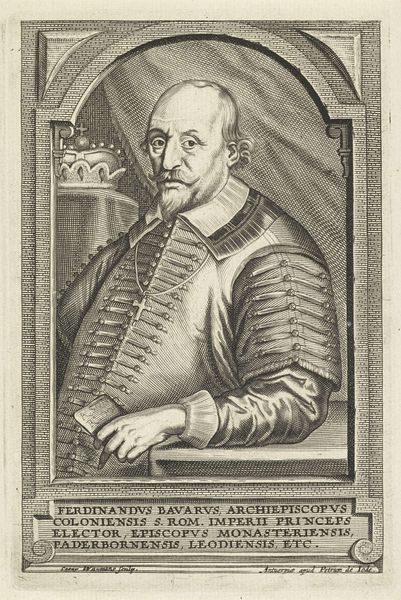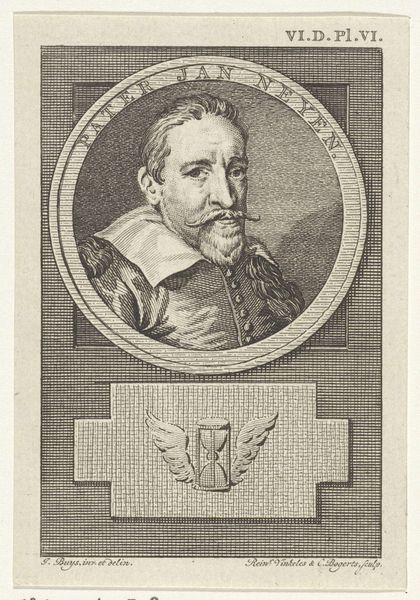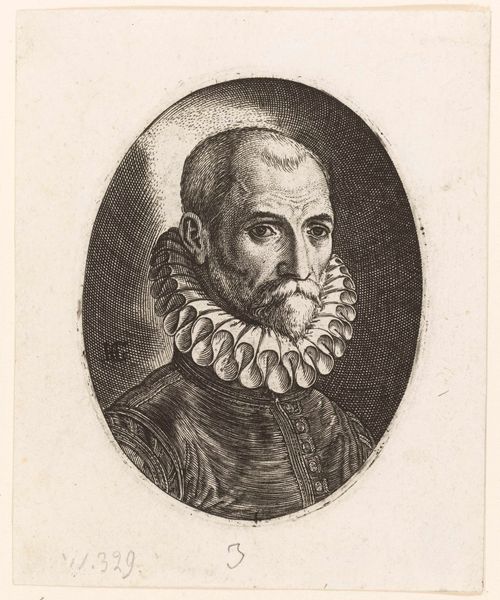
print, engraving
#
portrait
#
neoclacissism
# print
#
old engraving style
#
caricature
#
history-painting
#
engraving
Dimensions: height 95 mm, width 65 mm
Copyright: Rijks Museum: Open Domain
Editor: This engraving, "Portret van Adolf van Meetkercke" by Reinier Vinkeles, created between 1783 and 1795, has a very formal and almost stoic feeling to it. The detailing in the portrait itself is captivating, and I’m curious about the scene depicted below the portrait. How do you interpret this work, particularly within its historical context? Curator: The portrait is certainly striking, and the choice to frame it within this Neoclassical style calls attention to the subject’s position within the power structures of his time. Consider the rigid lines and the attempt to revive classical ideals – it's less about individual expression and more about projecting an image of authority and perhaps even linking him to a broader historical narrative of leadership and order. But who did this "order" serve? It's crucial to ask whose voices are missing and who is benefiting from this projection of power. What kind of politics might the depicted scene imply? Editor: That’s a good point. It's easy to get lost in the artistic details and miss the underlying power dynamics. Now that you mention it, I’m thinking about the composition of that rectangular scene – how does that mini tableau reinforce that idea of power you mention? Curator: Look at how the figures are positioned and their apparent relationships. Are they equals in this little scene, or do you perceive a hierarchy? Could this scene, perhaps alluding to a moment of judgement, be a comment on power structures and class differences within the society of the time? And how might the act of engraving itself—mass reproducible imagery—influence the dissemination of those power structures? Editor: I hadn’t considered the role of printmaking itself as a tool for spreading those ideologies. Seeing it this way really changes my perspective on the piece. Thanks for making me look beyond just the surface. Curator: And thank you for noticing that smaller scene: its very inclusion asks us to question who history remembers, and why.
Comments
No comments
Be the first to comment and join the conversation on the ultimate creative platform.


